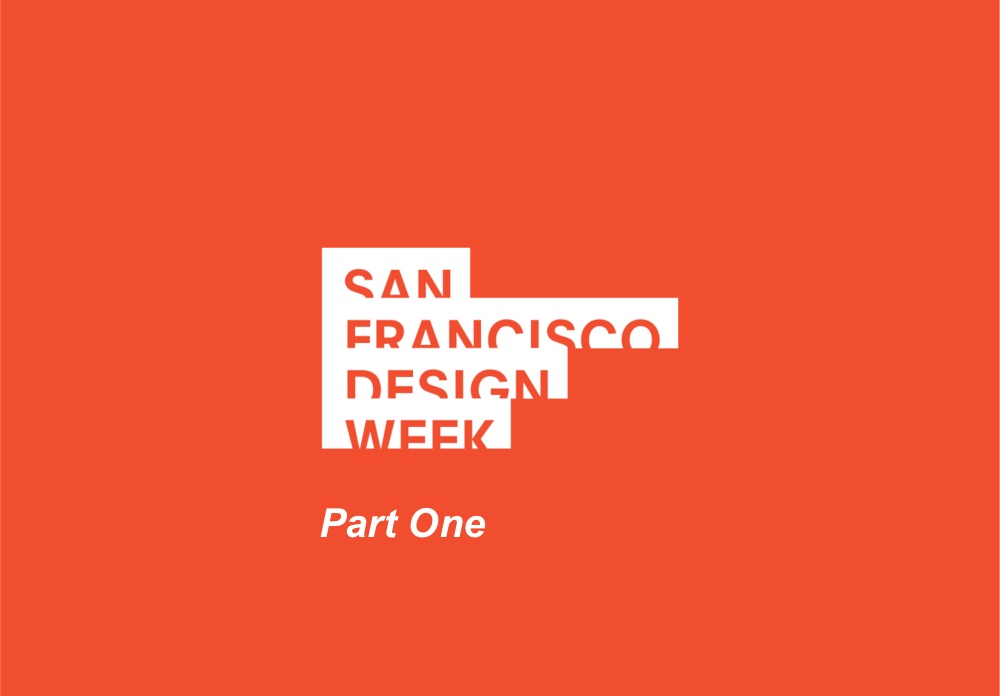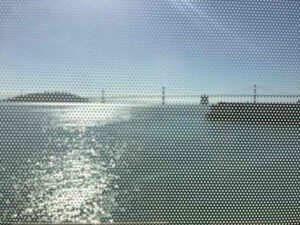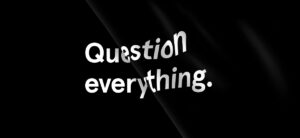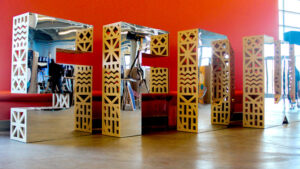
SF Design Week is a collection of events and talks centered around design-thinking. This year’s theme was ‘Question Everything,’ which I interpreted to mean ‘be open-minded.’ I went into each session with my own questions in mind:
- What are common challenges that designers encounter across all disciplines?
- How can we use another designer’s process and solutions to help develop our own?
- If common design patterns fail, how can we adapt?
UX design was (and still is) a growing community within the overarching design family. Design is constantly evolving and, as designers, we are continually wandering into new territory to make impactful changes. Design tips and tricks aren’t ‘designed’ to work for everyone, but understanding context, perspective, and experiences can happen simply by asking questions. As a designer, you have to make sure to ask the ‘right’ ones for you.
What are common challenges that designers encounter across all disciplines?
Alllll designers have some kind of struggle. As the main UI designer at 219 Design, a predominately engineer-staffed consulting firm, I have been pleasantly surprised at the minimal friction between designers and engineers (both co-workers and clients). However, to be fair, I’ve only been at 219 for a little over a year so maybe I haven’t given myself enough time to experience what designers at other companies have.
Collaboration for Innovation
Yeti is also a small consulting firm of developers and designers who are creating innovative solutions for their clients. It has a verrrryyyy similar dynamic to 219, where there’s a majority of engineers and a designer or two, so I assumed their challenges would be similar to ours. Yeti’s Design Week event, ‘How to Collaborate for Innovation’, was an informative panel session that had both developers and designers share their approach to project collaboration problems and solutions. As I passed by their mixed desk pods of devs and designers, I could feel how eerily similar it was to 219’s space – familiar and homey. It was this session that best answered my questions about common challenges.
Better Communication = Better Collaboration
Whether it’s a client or in-house project, big or small, Yeti’s team admitted to consistently struggling with communication and collaboration. Big. Surprise. Not really. As the panel began to unveil their stories, I could see the event attendees nodding and smirking ubiquitously as if they had shared the exact same experiences.
Forgetting where documents live. Remote collaboration. Task management. Version control. I too could identify with the frustrations that come with team collaboration. They briefly discussed the types of communication and collaborations tools Yeti uses, as well as ways to optimize those tools. But… Zeppelin/InVision/JIRA/<insert favorite tool> only work when everyone’s on board and understands how to use them. Also, depending on each project, teams end up being managed differently because people are different… and we just kind of have to get used to that.
Preventing the Designer vs. Developer Head-butt
It’s just good practice to be mindful of the people you work with and how they work! Sometimes the struggle isn’t the physical space in which you communicate, but rather the struggle of understanding each other. The designer vs. developer head-butt. To emphasize the importance of all contributors and their opinions and concerns, there needs to be open and frequent dialogue between designers and developers throughout the life cycle of the project. Once regular communication is in place, interacting on collaborative platforms and updating each other in real-time becomes even more helpful for distributed teams. In general, the consensus from the panel was to listen to your team’s dynamic from the start to ensure smooth collaboration, but we all know that it’s a lot harder said than done.
How can we use another designer’s process and solutions to help our own?
In general, I’ve picked up a lot of my own process from friends and online resources or have had to create an entirely new approach for a specialized design problem. But when I’m out of ideas and Googled solutions aren’t enough, bouncing off ideas and sharing experiences with other designers can create idea paths that I wouldn’t have been able to reach without someone else’s input or perspective.
Design for X’s design week event, ‘Bridging the Gap Between Designers and Social Ventures’, was an interactive workshop about providing designers the resources to connect with meaningful causes they want to grow and work with. It didn’t directly address my question, but gave me new ideas on how to find inspiration to evolve my process.
Talk with Others
The long communal discussion tables were filled with the most diverse group of attendees I had seen at this year’s Design Week. It was heartwarming to see people from different backgrounds and disciplines coming together based on the idea of helping create solutions for the good fight.
Make an Impact
One of the speakers shared a story about how he helped reconnect a homeless man and his family with the power of social media. The speaker recorded and posted a video message to social media platforms on behalf of a homeless man, in the hopes that it would help him find his biological family. It worked and he went on to start a movement, inspiring others to take the initiative to help homeless people across the country find their families. The combination of empathy for a cause and a simple solution made a huge impact.
Diversify your Perspective
At the end of the workshop, the Design for X staff encouraged us to pursue the social ventures and causes we had discussed at the beginning of the day. It seemed that one of the goals of the workshop was to bring people together who would usually not cross paths, brainstorm new solutions, and make moves with these newly found resources. A key takeaway from this workshop was that a large part of a designer’s day-to-day process requires communicating and explaining designs to others. That’s why it’s important to introduce yourself to new spaces and people so you can diversify your perspective and solutions.

If common design patterns fail, how do we adapt?
Brand guidelines and design schematics vary from one company to another and from one product to the next. The world of augmented and virtual reality (AR/VR) is no exception and requires designers to break out of current design standards and practices to adapt. ‘Design Innovation for Virtual Reality and Augmented Reality’ was a diverse panel discussion where each speaker was struggling with a specialized AR/VR product problem. Three things stood out for me.
Consider the Physical Space
One of the speakers came from a company that is creating a remote collaboration solution. In AR/VR not only do we need to think about what the user is seeing, but also where they are seeing and experiencing everything. The physical space becomes a whole new landscape to design within, requiring AR/VR designers to think and work in the 3D realm as a minimum requirement.
View the Brain as a Design Pattern
AR/VR are powerful tools that mimic both real-world and ‘magical’ properties. Users want objects to open and close like they would in the real world, but also disappear once the user doesn’t need them anymore. Designers are still understanding how users interpret dimensional interactions, where ultimately the design pattern we’re trying to figure out is the human brain. Weird! We’ll figure it out one day, but for now just a lot more build, test, study, repeat.
Think About Trigger Points
At the moment, there is an endless amount of ideas and concepts to connect people in an entirely new way using AR/VR. Immersing yourself in a new environment, a new reality, can alter the way you think and feel about the world, ALMOST like traveling to a new country. You ALMOST feel like you’re there. There are talks of learning empathy and understanding by sharing what different content creators have experienced and could share. Cognitive studies show that the brain is triggered by specific stimuli and memories, so designers should be mindful about hitting trigger points unintentionally.
The value placed on collaboration and listening to each other was obvious in every session I attended. I walked away learning a lot after being exposed to so many new viewpoints, and I’m super excited to use my new knowledge on my projects at 219!
If you liked this blog, you can read my follow-up blog here!


